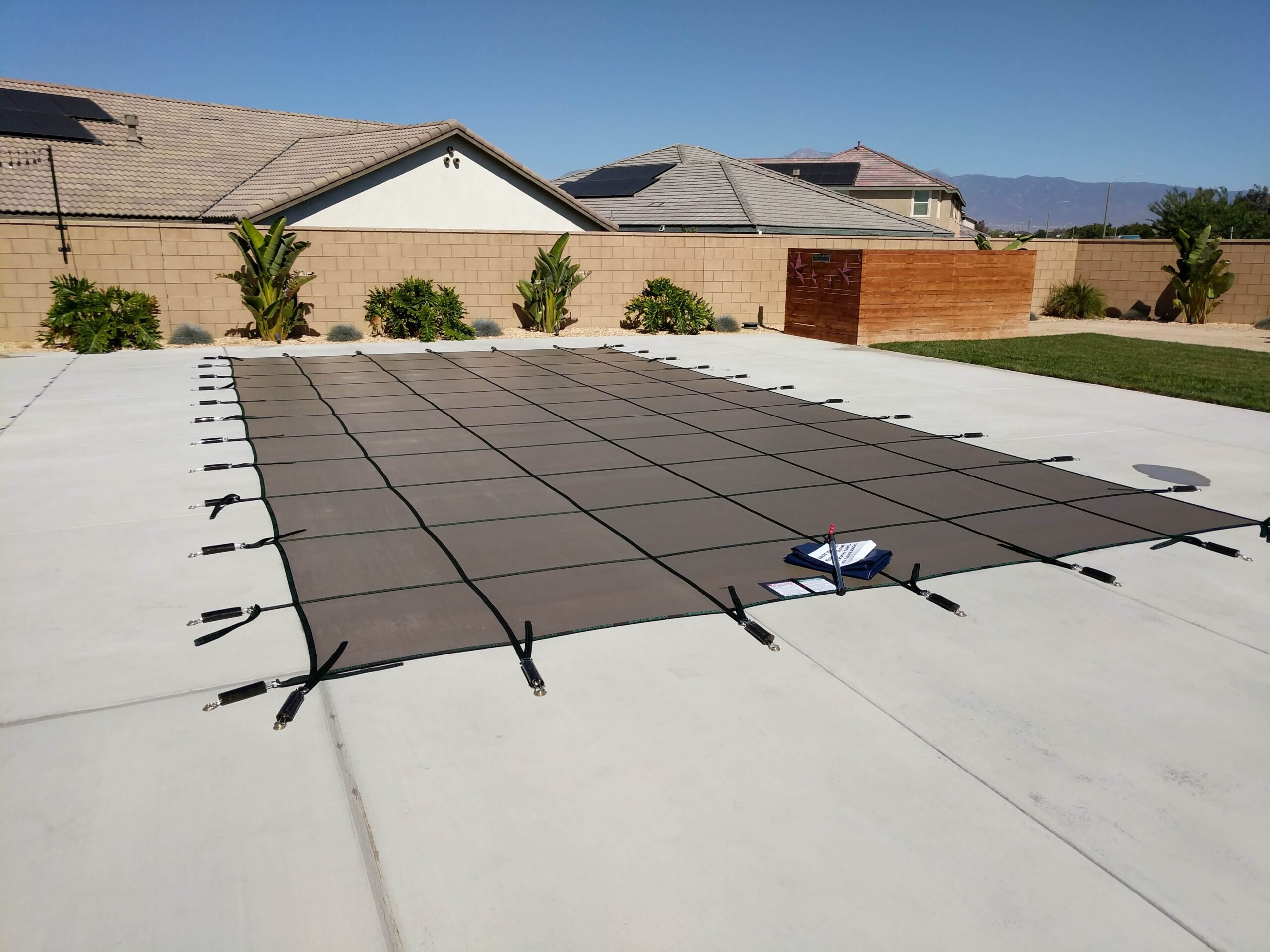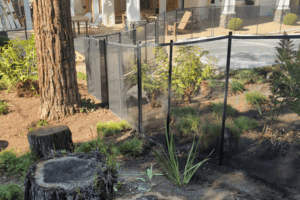
Upgrading Your Existing Pool Fence: DIY Options for 2025
Find the best pool fence options for upgrading your DIY removable mesh pool fence. These are our top suggestions to get the pool fence idea juices flowing.
Home > A Guide to Help You Close Your Pool for Winter

Part of keeping your swimming pool safe year-round is understanding the right way to close your pool for the winter. Beyond the ability of proper pool winterization to protect your swimming pool from damage during the cold months, it also helps you ensure it’s easier to reopen your swimming pool safely in the spring as temperatures rise. There’s a lot more to being ready for freezing temperatures than just knowing what chemicals you put in the pool for winter, but don’t worry. As your trusted pool safety and information experts, we’re ready to help take the guesswork out of the change of seasons so you can close your pool for the winter with confidence.
When temperatures dip toward freezing, your pool is in danger. Ice expands as it freezes, threatening pipes, hoses, and vinyl pool liners. In addition, many plastic and polymer-based materials can become brittle in extreme cold. Beyond these straightforward damage risks, many pool owners find that keeping up with regular maintenance–an often wet and water-logged job during the best of times–can be unpleasant and even dangerous when freezing temperatures and wind are involved. This leads to lapses that make bacterial proliferation, algae bloom, and scaling all the more likely before consistent warm weather returns.
When you close your pool for the winter, you’re protecting it for the duration of the cold-weather months by lowering the risk of ice-related damage, biological contaminations that can take extensive work to eliminate once they’ve gained a foothold and scaling or discoloration that comes from still water sitting for long periods of time. Once temperatures are consistently dropping below 65℉, it’s time to start planning to winterize your pool. You want to make sure your pool is ready before the first freezes hit, but after they begin staying down low enough that the chemicals you put in the pool for winter are sufficient to control algae both immediately and until the weather warms up enough for normal maintenance to resume.
Before you begin to winterize your pool, take the time to make sure you’re ready to complete the process. That includes making sure you have the chemicals and cleaning supplies you need as well as the time required to do the job right.
Now that the prep work is done, it’s time to start the closing process in earnest. Right now, aside from the missing fixtures, your pool is still as ready to accept summer swimmers as it was when the season started, so it’s time to get it ready for colder weather.
You’re almost done. The water and equipment are prepared, so all that’s left is to securely close the pool for the winter. When you winterize your pool, it’s not just about protecting the pool itself but also about keeping your pool area safe for your loved ones year-round.
Your local All-Safe Pool installers are the local pool safety experts you can rely on to help you create a pool that helps protect your friends, family, and pets. They’ll take measurements, talk to you about your pool’s needs, and explain your safety barrier options. Finally, they’ll give you a written estimate that shows you just how cost-effective safety can be. Schedule your free quote with your All-Safe Pool installer today.

Find the best pool fence options for upgrading your DIY removable mesh pool fence. These are our top suggestions to get the pool fence idea juices flowing.

The top pool fence accessories can help you get the most from your backyard oasis. Take a look at our top recommendations and learn how to pick the gear that’s right for your pool safety fence installation.

Building a fence on uneven ground doesn’t have to compromise your family’s safety. Learn our top tricks for measuring and understanding your land’s dips, bumps, and slopes so you can keep your loved ones safe.
Enter your zip code to locate an independent installer in your area
Enter your zip code to locate an independent installer in your area
Enter in your zip code to let us know where your pool is located.
Due to the many variations in monitors, phones, and browsers, color samples and product examples may appear different on different screens. Computers and mobile devices are not all calibrated equally and color reproduction on the Internet is not precise. The same is true for printed items such as brochures and other sales literature.
In addition, the colors of our products photograph differently under different lighting conditions. For example, photos taken in full sunlight will vary from photos taken on a cloudy or overcast day. Similarly, shadows from nearby objects can affect the color and transparency of our products. If a precise color or specific shade is important, please inspect the actual color of your product prior to installation.
Many of our products’ materials are not available through typical stores and vendors and therefore must be custom manufactured specifically for our use. In order to control costs and provide you with the best value possible, our raw materials are produced in large batches and can often take several months to receive. The colors of our materials can, and often do, vary slightly from batch to batch. Although we make every effort to minimize color variations, we cannot be responsible for these differences when they occur. If a precise color or specific shade is important, please inspect the actual color of your product prior to installation.
For example, we use the name “putty” to describe some of our products. Your idea of the color “putty” may be different than someone else’s idea of “putty”. In addition, products may have the same color name but may not be the exact same color. For example, we have different shades of “black”. Please do not order using color names as your only guide. If a precise color or specific shade is important, please inspect the actual color of your product prior to installation.
If it is important that your product be an exact color or shade, it is highly recommended that you inspect the actual product prior to its installation and address any concerns with your local independent installer. Most independent installers do not offer refunds or accept returns due to color variations.